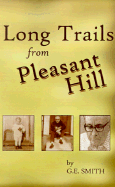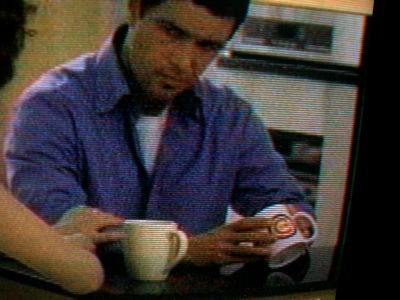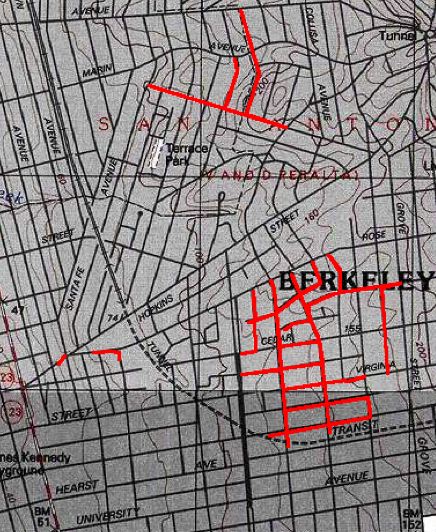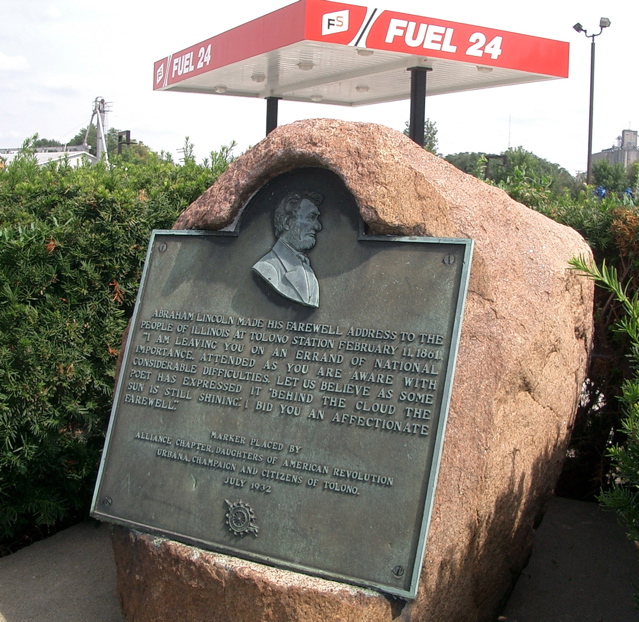“There was a desert wind blowing that night. It was one of those hot dry Santa Anas that come down through the mountain passes and curl your hair and make your nerves jump and your skin itch. On nights like that every booze party ends in a fight. Meek little wives feel the edge of the carving knife and study their husbands’ necks. Anything can happen. You can even get a full glass of beer at a cocktail lounge.”
— Raymond Chandler, “Red Wind”
***
“It was past noon, and very hot. The bar was full of reflected river light, with dancing veins of gold. … The light was the light of the very early afternoon — everything stoked up, the blaze got truly going, but with a hint of the blaze about to consume itself.”
— V.S. Naipaul, “A Bend in the River”
***
“Gimme Swelter”
— New York Daily News
***
BERGEN-EASTERN PASSAIC-ESSEX-HUDSON-UNION-
1142 AM EDT TUE JUL 18 2006
AN EXCESSIVE HEAT WARNING REMAINS IN EFFECT UNTIL 7 PM EDT THIS EVENING.
HIGH TEMPERATURES WILL TOP OUT IN THE UPPER 90S TO AROUND 100 DEGREES TODAY…WITH HEAT INDICES REACHING 105 TO 107 DEGREES DURING THE AFTERNOON. MAKE PLANS TO CHECK ON THOSE MOST SUSCEPTIBLE TO THE HEAT SUCH AS THE ELDERLY AND VERY YOUNG. PETS WILL ALSO NEED YOUR SPECIAL ATTENTION DURING THIS TIME.
AN EXCESSIVE HEAT WARNING IS ISSUED WHEN HIGH HUMIDITIES ARE EXPECTED TO COMBINE WITH HOT TEMPERATURES TO MAKE IT FEEL LIKE IT IS 105 DEGREES OR GREATER. DRINK PLENTY OF FLUIDS…STAY IN AN
AIR-CONDITIONED ROOM…STAY OUT OF THE SUN…AND CHECK UP ON RELATIVES AND NEIGHBORS.
— Excessive Heat Warning for northeastern New Jersey
***
URGENT – WEATHER MESSAGE
NATIONAL WEATHER SERVICE MOUNT HOLLY NJ
342 PM EDT TUE JUL 18 2006
…EXCESSIVE HEAT WARNING REMAINS IN EFFECT UNTIL 9 PM EDT THIS EVENING…
A VERY HOT AND HUMID AIR MASS WILL REMAIN OVER OUR REGION EARLY THIS EVENING. THE COMBINATION OF THE HEAT AND HUMIDITY WILL RESULT IN DANGEROUS CONDITIONS. THE HEAT WILL DIMINISH AFTER SUNSET. HOWEVER, HUMIDITY WILL STILL REMAIN UNCOMFORTABLE. …
STAY PREPARED FOR THE HEAT. WEAR LOOSE FITTING AND LIGHT COLORED CLOTHING. DRINK PLENTY OF NON-ALCOHOLIC BEVERAGES TO PREVENT DEHYDRATION. IF POSSIBLE, AVOID STRENUOUS ACTIVITY DURING THE
HOTTEST PART OF THE DAY, WHICH IS TYPICALLY BETWEEN 1:00 AND 6:00 PM.
REMEMBER THAT THE ELDERLY, THE INFIRM AND THE VERY YOUNG ARE MOST SUSCEPTIBLE TO HEAT RELATED HEALTH PROBLEMS. BE SURE TO CHECK ON YOUR ELDERLY NEIGHBORS AND RELATIVES.
MAKE PROVISIONS FOR PETS AND ANIMALS BY INSURING THAT THEY HAVE PLENTY OF COOL WATER TO DRINK AND SHADE IN WHICH TO REST.
— Excessive Heat Warning, Philadelphia Area
***
URGENT – WEATHER MESSAGE
NATIONAL WEATHER SERVICE BALTIMORE MD/WASHINGTON DC
334 PM EDT TUE JUL 18 2006
… THE MOST IMPORTANT THING TO REMEMBER WHEN THE WEATHER TURNS HOT IS TO DRINK PLENTY OF FLUIDS. WATER IS YOUR BEST CHOICE AS IT PREVENTS DEHYDRATION. IF YOU ARE WORKING OR EXERCISING OUTSIDE AND FEEL DIZZY OR ARE GETTING MUSCLE CRAMPS…STOP IMMEDIATELY AND SEEK MEDICAL HELP. THE ELDERLY AND YOUNG ARE MOST SUSCEPTIBLE TO HEAT RELATED INJURIES…CHECK ON THEM OFTEN. NEVER LEAVE PETS UNATTENDED IN AUTOMOBILES – TEMPERATURES CAN SOAR TO 130 DEGREES IN A MATTER OF MINUTES.
–Heat Advisory for Washington, D.C.-Baltimore area
***
URGENT – WEATHER MESSAGE
NATIONAL WEATHER SERVICE WAKEFIELD VA
1136 AM EDT TUE JUL 18 2006
… A HEAT ADVISORY MEANS THAT A PERIOD OF HOT TEMPERATURES IS EXPECTED. THE COMBINATION OF HOT TEMPERATURES AND HIGH HUMIDITY WILL COMBINE TO CREATE A SITUATION IN WHICH HEAT ILLNESSES ARE POSSIBLE. DRINK PLENTY OF FLUIDS…STAY IN AN AIR-CONDITIONED ROOM…STAY OUT OF THE DIRECT SUNLIGHT…AND CHECK UP ON RELATIVES AND NEIGHBORS.
THE ELDERLY…YOUNG CHILDREN…PETS…AND LIVESTOCK ARE THE MOST LIKELY TO BE IMPACTED BY HEAT RELATED ILLNESSES AND DEHYDRATION. CAUTION SHOULD BE EXERCISED IF YOU PLAN TO BE OUTSIDE. DRINK PLENTY OF WATER. LIMIT YOUR EXPOSURE TO DIRECT SUNLIGHT…USE SUNSCREEN AND WEAR LIGHT COLORED CLOTHING.
Heat Advisory for central and southern Virginia and North Carolina
***
URGENT – WEATHER MESSAGE
NATIONAL WEATHER SERVICE KANSAS CITY/PLEASANT HILL MO
118 PM CDT TUE JUL 18 2006
.HIGH TEMPERATURES HAVE BEEN IN THE 90S SINCE LAST WEDNESDAY… AND VERY HOT AND HUMID CONDITIONS WILL PERSIST THROUGH TOMORROW AND THURSDAY. THE LAST TWO DAYS HAVE BEEN ESPECIALLY BRUTAL… WITH MANY LOCATIONS IN KANSAS AND MISSOURI REPORTING 100 DEGREE TEMPERATURES WITH HIGH LEVELS OF HUMIDITY. WITH DAY AFTER DAY OF EXCESSIVE HEAT… THE CUMULATIVE EFFECT OF THE OPPRESSIVE CONDITIONS WILL TAKE ITS TOLL ON THE ELDERLY AND PEOPLE WITH POOR HEALTH. …
AN EXCESSIVE HEAT WARNING IS ISSUED WHEN THE COMBINATION OF HOT TEMPERATURES AND HIGH HUMIDITY IS EXPECTED TO RESULT IN HEAT INDICES EXCEEDING 105 DEGREES FOR AT LEAST 3 HOURS…FOR THREE OR MORE CONSECUTIVE DAYS. AVOID PROLONGED EXPOSURE TO THE HEAT…AND BE SURE TO DRINK PLENTY OF WATER. ALSO AVOID ANY STRENUOUS OUTDOOR PHYSICAL ACTIVITY…PARTICULARLY DURING THE HOTTEST AFTERNOON HOURS.
CHILDREN…THE ELDERLY…AND PEOPLE WITH CHRONIC ILLNESSES…ARE USUALLY THE FIRST TO SUFFER FROM THE HEAT. HEAT EXHAUSTION…OR IN EXTREME CASES HEAT STROKE…MAY RESULT FROM PROLONGED EXPOSURE TO THESE CONDITIONS. BE SURE TO PERIODICALLY CHECK ON PEOPLE WHO ARE MOST AT RISK. SEEK OUT AN AIR CONDITIONED LOCATION DURING THE HOTTEST PART OF THE DAY. IF YOU OR SOMEONE YOU KNOW DOES NOT HAVE ACCESS TO AIR CONDITIONING…CONTACT YOUR LOCAL OFFICIALS TO INQUIRE ABOUT THE AVAILABILITY OF COOLING CENTERS IN YOUR AREA.
Excessive Heat Warning, Kansas City area
***
URGENT – WEATHER MESSAGE
NATIONAL WEATHER SERVICE ST LOUIS MO
457 AM CDT TUE JUL 18 2006
… FOR THOSE LIVING IN NON-AIR CONDITIONED BUILDINGS…THE DANGERS OF HEAT RELATED ILLNESSES WILL BE INCREASING DRAMATICALLY OVER THE NEXT FEW DAYS BECAUSE OF THE PERSISTENT HOT AND HUMID CONDITIONS. FROM TIME TO TIME…BE SURE TO CHECK ON FRIENDS AND RELATIVES THAT DO NOT HAVE AIR CONDITIONING…ESPECIALLY IF THEY LIVE ALONE. OPEN WINDOWS AND USE FANS TO MOVE THE AIR…AND IF POSSIBLE TRY TO GO TO AN AIR CONDITIONED LOCATION FOR A FEW HOURS EACH DAY TO GIVE YOUR BODY A BREAK FROM THE HEAT. …
IF YOU HAVE AIR-CONDITIONING…USE IT! IF COST IS A CONCERN…UTILITIES AND OTHER LOCAL AGENCIES WILL BE ABLE TO HELP WITH THE ADDED EXPENSE. FOR PEOPLE IN THE ST. LOUIS METROPOLITAN AREA NEEDING INFORMATION ON COOLING CENTERS OR ENERGY ASSISTANCE RELATED TO THE EXCESSIVE HEAT…YOU CAN CALL OPERATION WEATHER SURVIVAL AT THE UNITED WAY OF GREATER ST. LOUIS. THE NUMBER IS 800-427-4626.
Excessive Heat Warning for east-central Missouri and west-central Illinois




